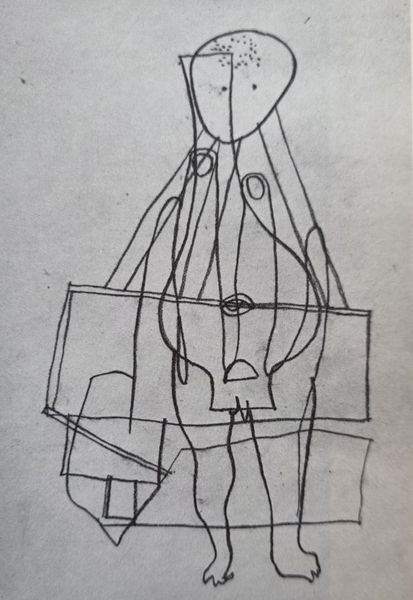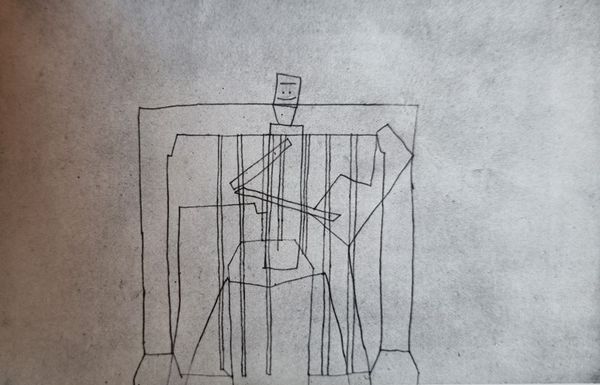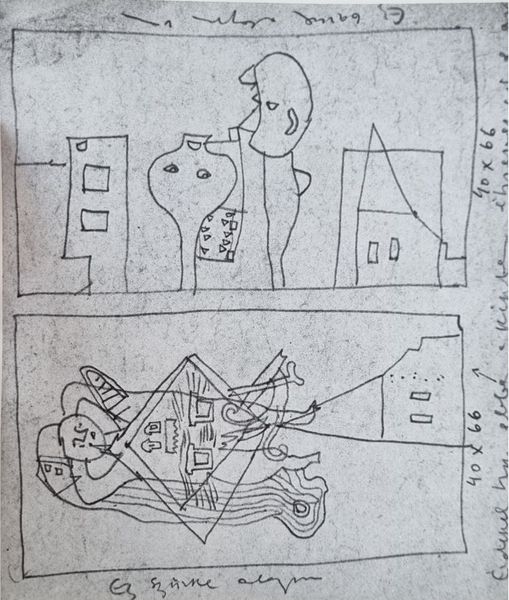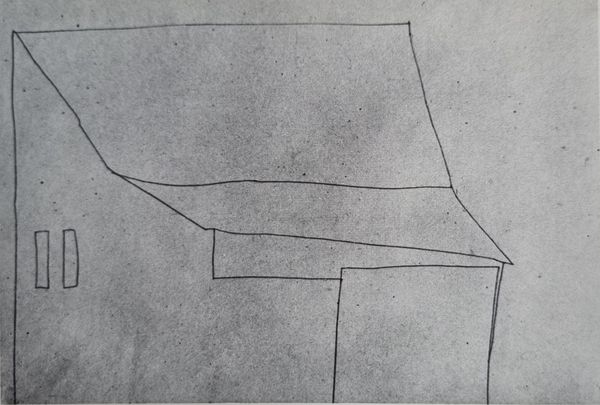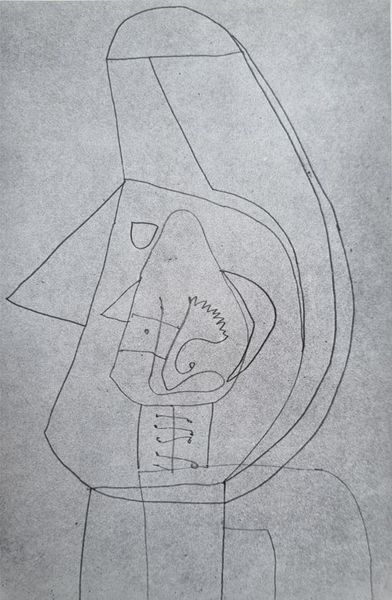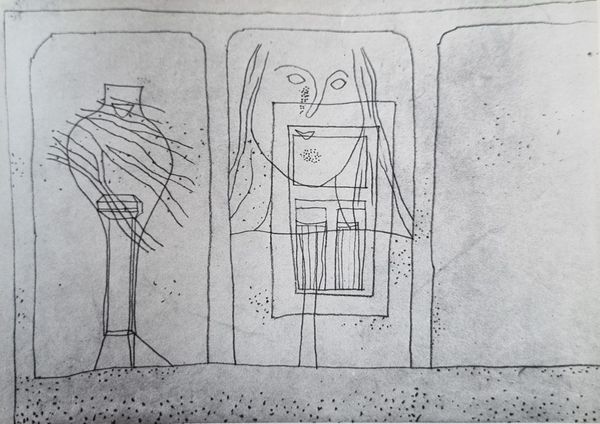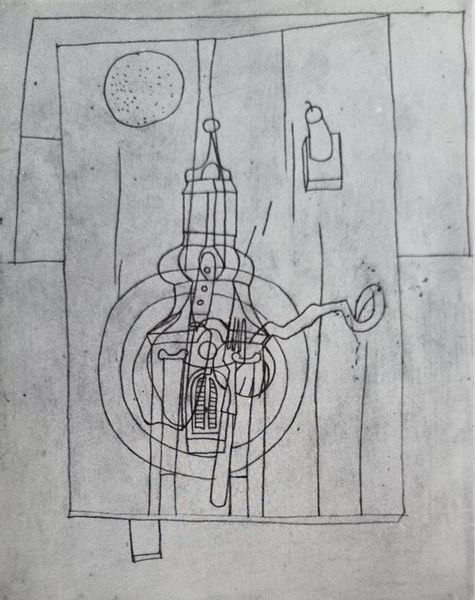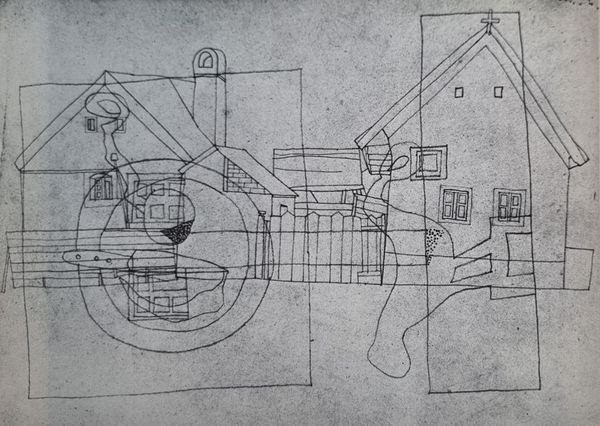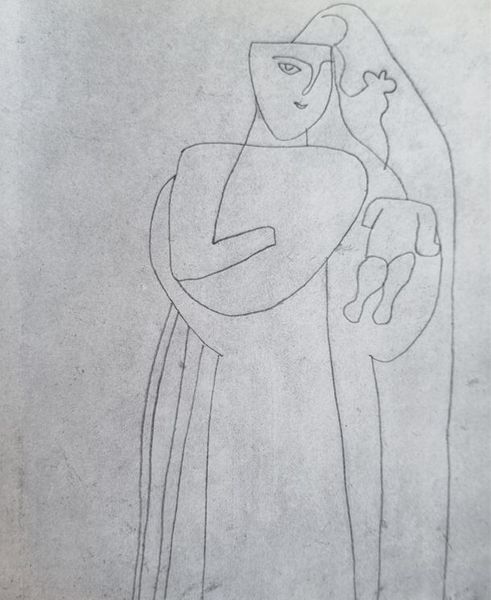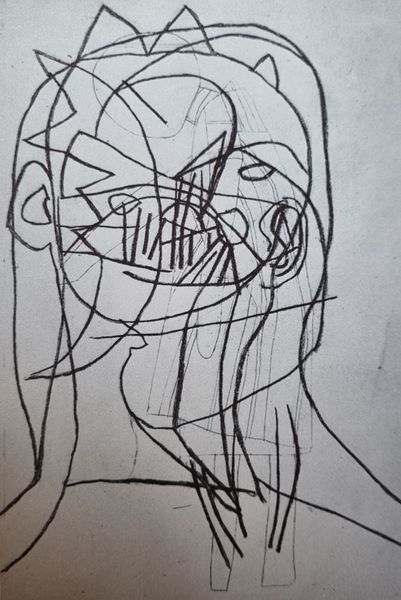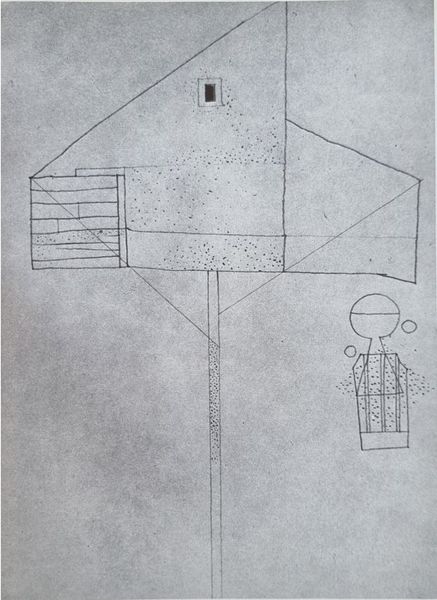
drawing, paper, ink
#
portrait
#
drawing
#
paper
#
ink
#
geometric
#
abstraction
#
modernism
Copyright: Public domain
Vajda Lajos created this self-portrait in 1936, a period of rising social and political tensions in Europe. The stark lines and geometric forms reflect not just the influence of constructivism, but also a deeper exploration of identity within a changing world. The window frame, bisecting the artist’s face, suggests division or a sense of being trapped. Vajda, who was of Jewish heritage, made this work during a time when antisemitism was on the rise. The superimposition of geometric shapes and everyday objects over the artist’s portrait creates a sense of fractured identity and alienation. Consider how the act of portraying oneself within a confined space might reflect feelings of vulnerability or the struggle to maintain individuality. The personal becomes a site of broader cultural anxieties, embodying the sense of unease felt by many during this tumultuous period. This self-portrait is a powerful meditation on the self as it confronts the shadows of history.
Comments
No comments
Be the first to comment and join the conversation on the ultimate creative platform.
